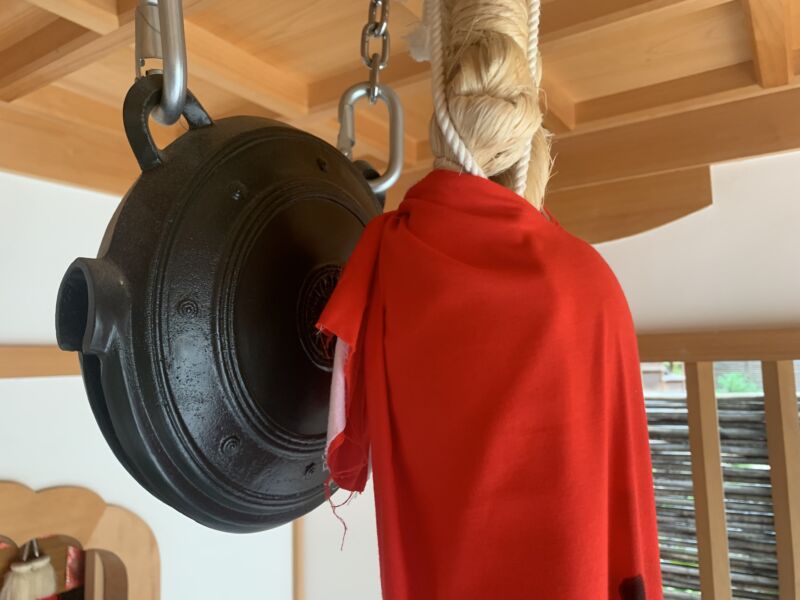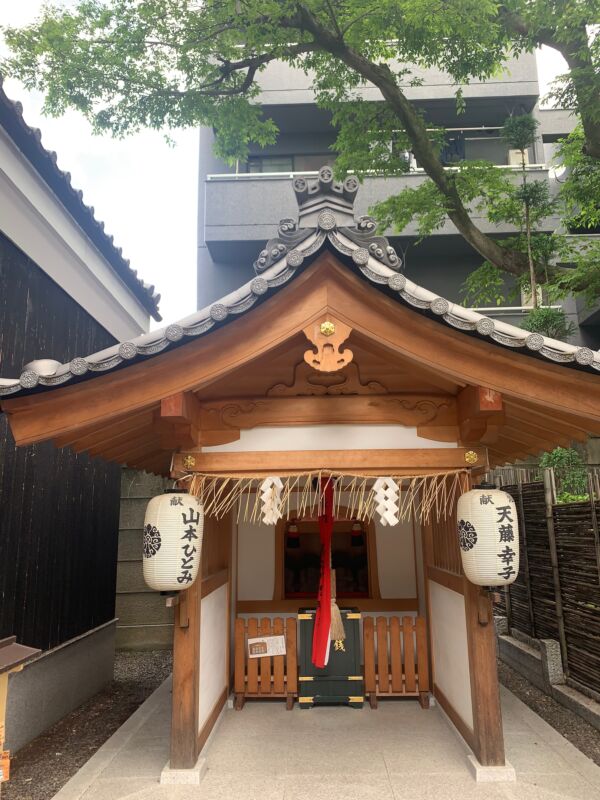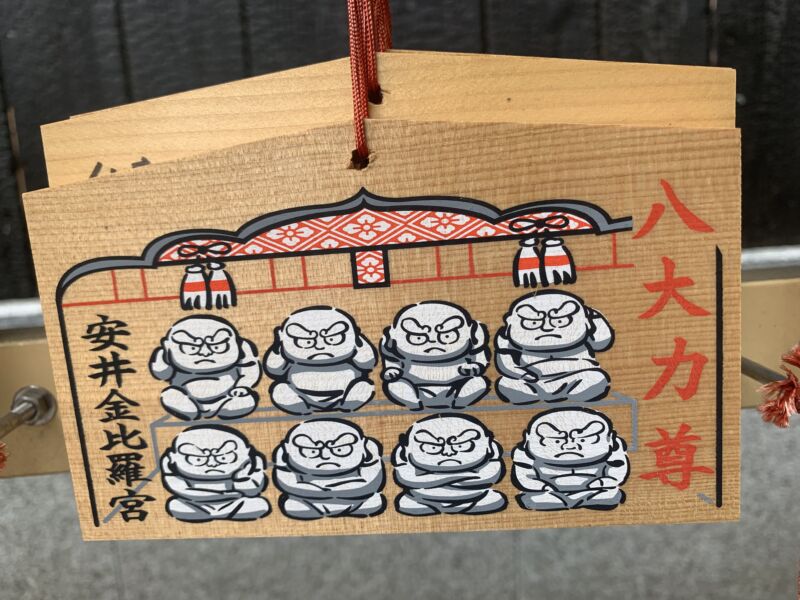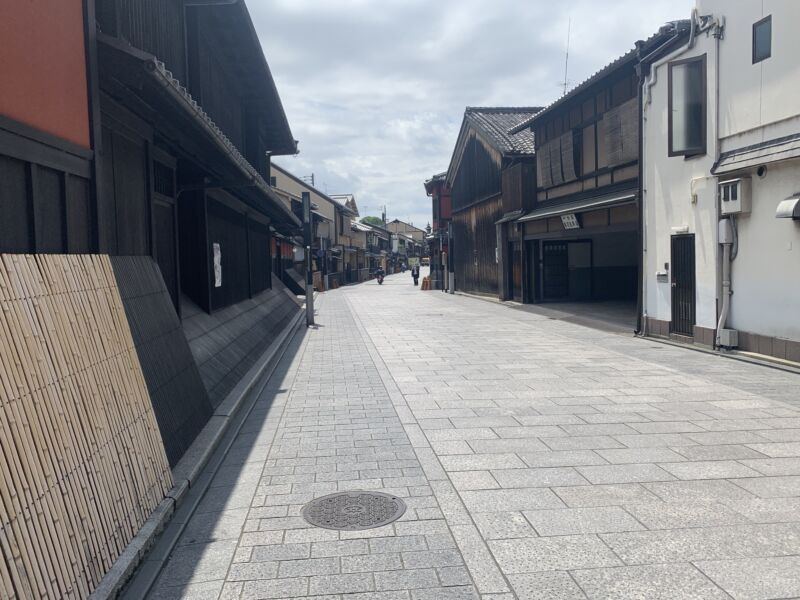
Yesterday I took a walk through Gion to explore the ’empty Kyoto’ phenomenon. The crowded teeming streets of overtourism days a few months ago have been transformed into eerily vacant spaces devoid of human presence. Even the top geisha district spot was empty. It’s very unnerving.
Green Shinto has carried items on the Gion Shrine of Yasui-Konpira-gu before, focussing on seven different distinctive features. It’s said to be a power spot and is famous above all for its ‘en-giri‘ rock, through which one can crawl in order to make a clean break with an old relationship. The petitioner can then crawl back through the other way in the hope of starting a new relationship.
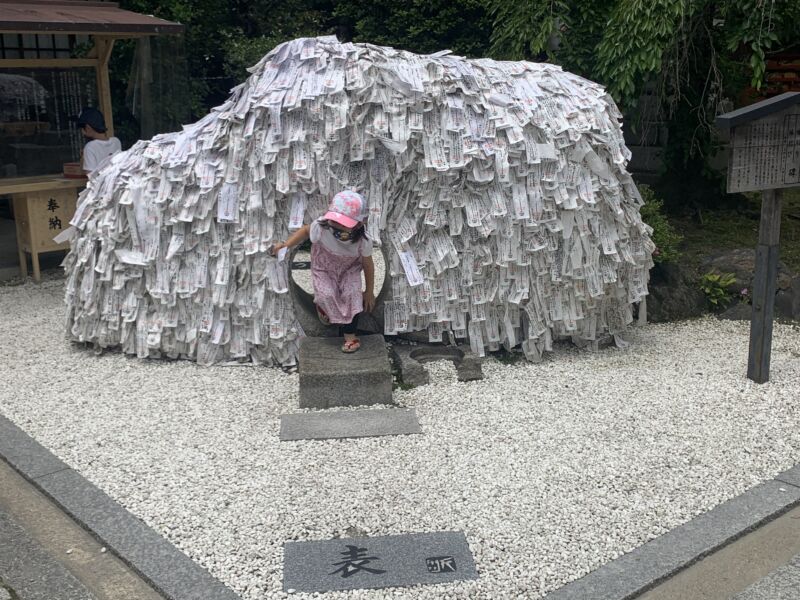
The history of the shrine is tied up with a temple called Rengein, of which it was an integral part until it had to make a break when the Meiji government introduced the shinbutsu bunri law in 1868 separating Shinto and Buddhism. The evidence of its ties with Buddhism remains, however, in a curious subshrine called Hachidai Rikison which stands in a corner of the precincts.
The shrine is built on the spot where once stood one of the pillars supporting the massive Main Hall of the temple. The pillar is seen now in animist fashion as a kind of Herculean spirit for having borne such weight. Though worshipped as a Shinto spirit, its past is signified in the Buddhist features of the subshrine – the architecture, the Chinese style opening, the bell.
As can be seen in the pictures below, the focus of worship are eight statues of wrestlers with stern expression – a unique expression of Shinto animism representing the personified spirits of eight stone pillars that once supported a massive temple. As such collectively they are said to represent firm foundations, overcoming adversity and the strength to survive.

